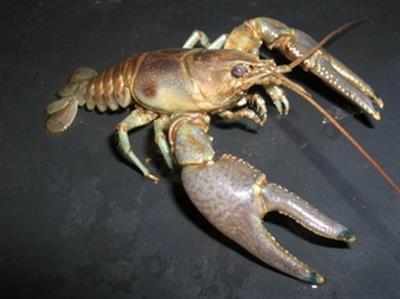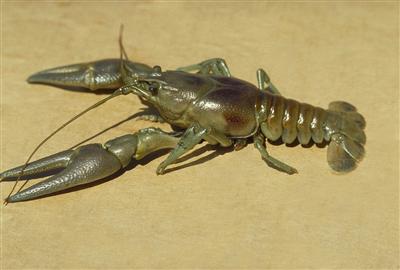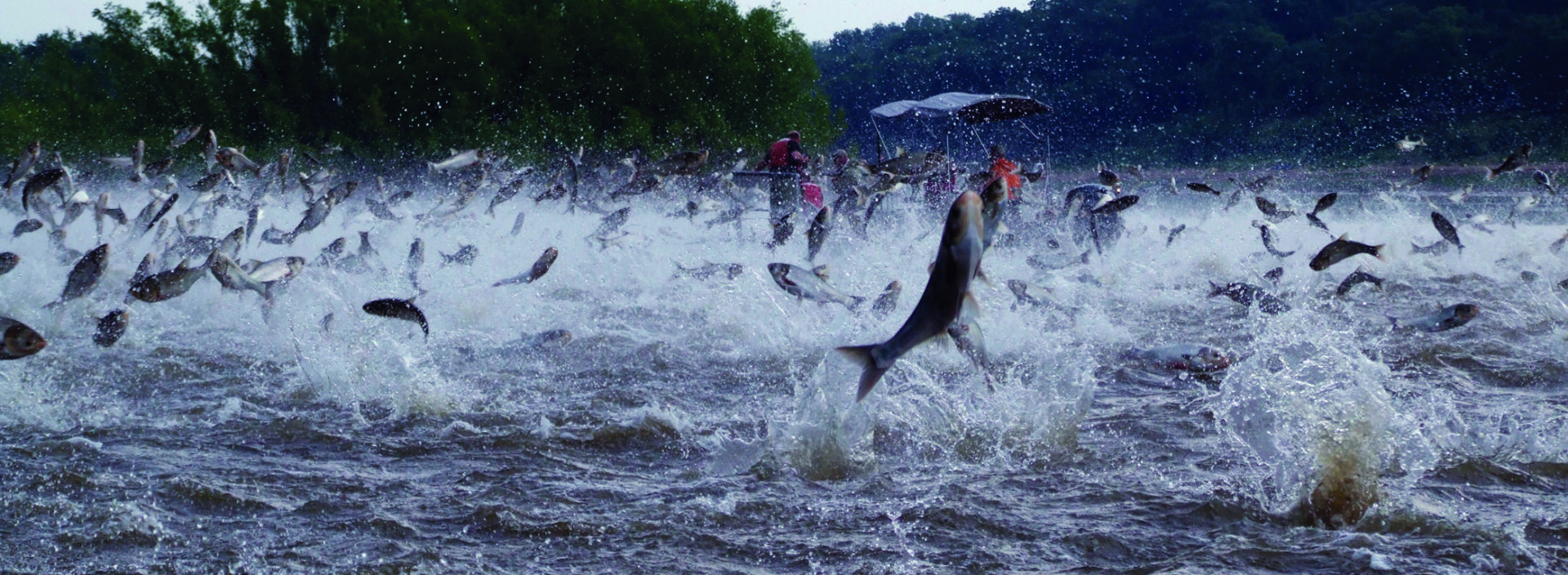[su_row]
[su_column size=”1/2″ center=”no” class=””] [/su_column]
[/su_column]
[su_column size=”1/2″ center=”no” class=””] [/su_column]
[/su_column]
[/su_row]
Where did the rusty crayfish come from?
- The rusty crayfish is actually native to the southern United States.
- It is believed that they were probably introduced to new areas by fishermen using them as bait.
Why are rusty crayfish a problem?
- They are an opportunistic feeder, which means they eat almost anything, including plants and small fish.
- They are a very aggressive species that often displace native crayfish.
- They also reduce the aquatic plant abundance and diversity by destroying the plants as they feed.
- Rusty crayfish mate in the late summer, early fall, or early spring, but the females wait until spring to lay their eggs. Each female can lay 80-575 eggs that will hatch in 3-6 weeks depending on the water temperature.
What do rusty crayfish look like?
- Rusty crayfish have dark rusty-colored spots on each side of their back, about where you would grab them to pick them up.
- They also have large, smooth claws that vary in color from grayish-green to reddish brown.
- The rusty crayfish also have black bands at the claw tips.
How do we control rusty crayfish?
- The best way to control rusty crayfish is to slow the spread of them to other lakes.
- Do not use them as bait.
- Inspect your boat and trailer for any exotic species and plants.
- Drain water from motor, boat, live well and bait bucket.
- Never transport them from one body of water to another.
- Learn how to identify the rusty crayfish.


